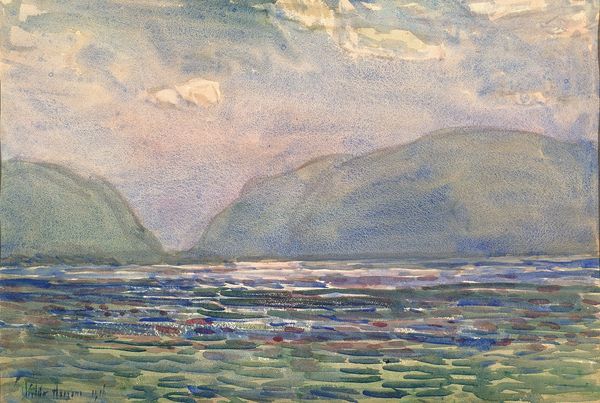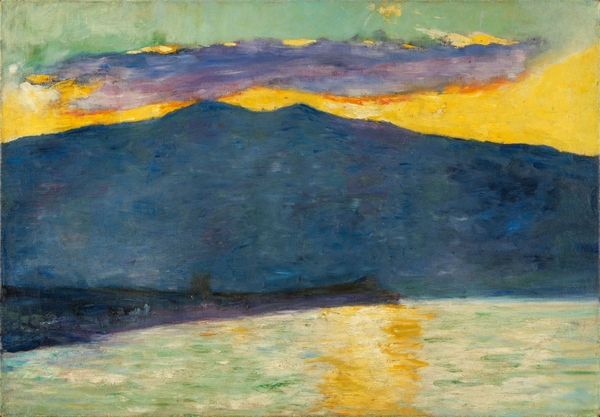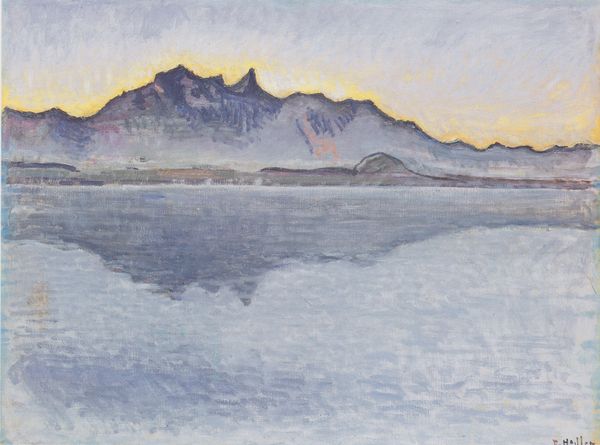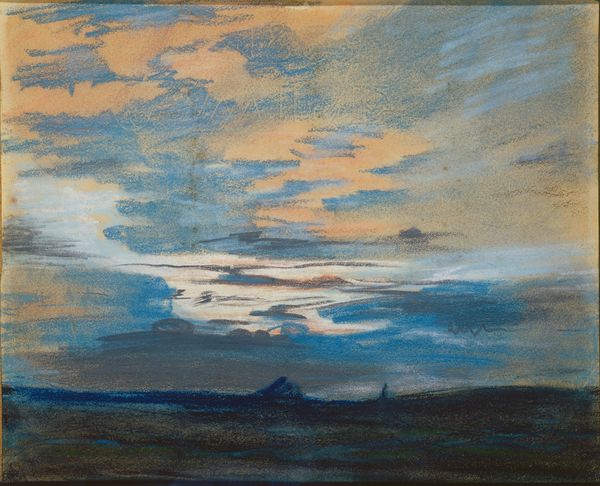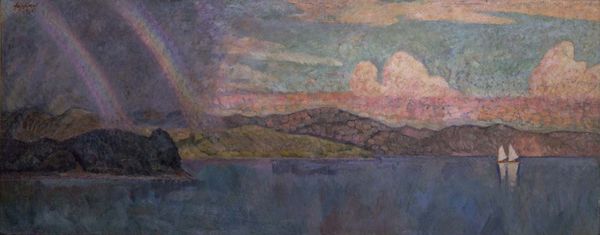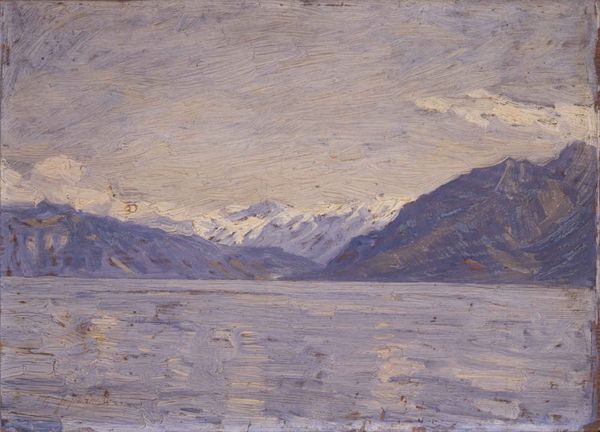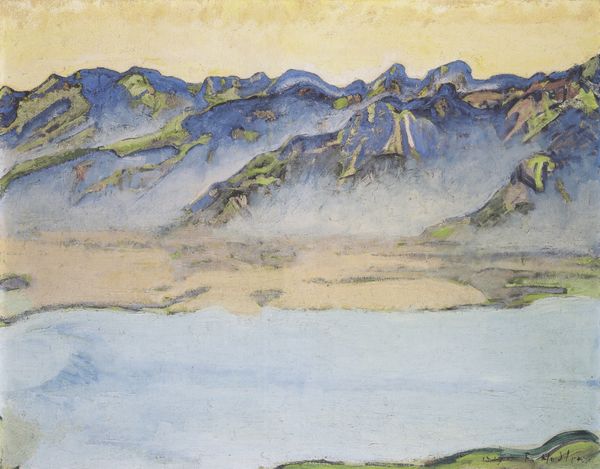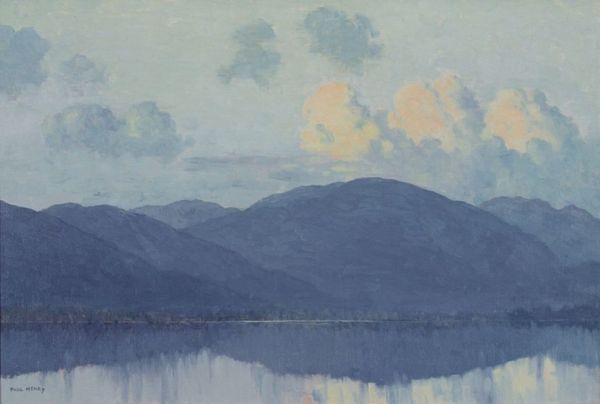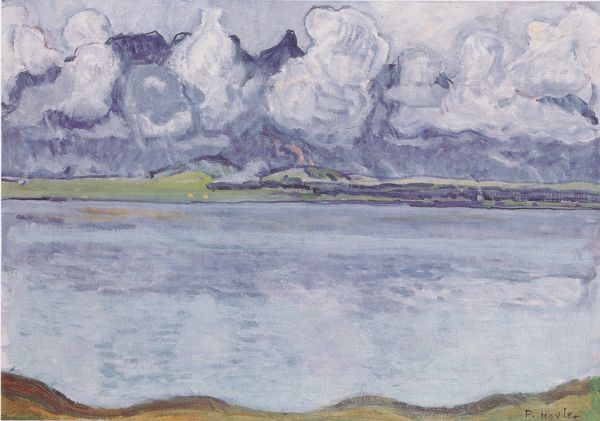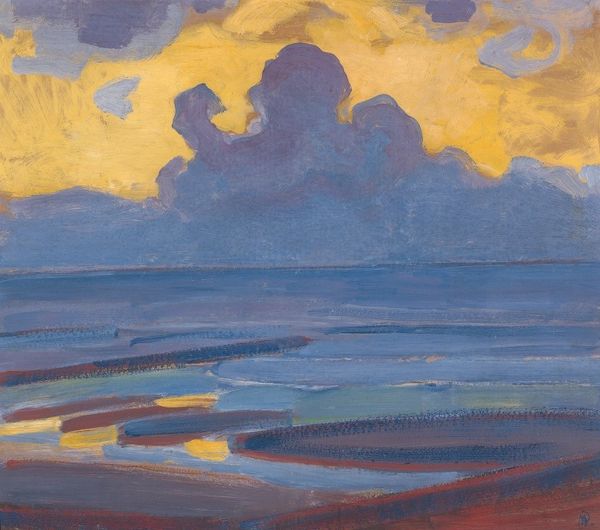
plein-air, oil-paint
#
plein-air
#
oil-paint
#
landscape
#
german-expressionism
#
impressionist landscape
#
possibly oil pastel
#
oil painting
#
expressionism
#
expressionist
Copyright: Public domain
Editor: This is "Test Drive Over the Alps," painted around 1924 by Willy Schlobach using oil paints in a plein-air style. The artwork depicts a zeppelin flying over a lake with snow-capped mountains in the background, giving a tranquil yet somehow industrial vibe. How do you interpret the meaning and materials used in this painting? Curator: Considering Schlobach’s piece through a materialist lens draws attention to the socio-economic implications of the materials and techniques used. The use of oil paint in a 'plein-air' style speaks to a particular accessibility afforded to the artist; where did he source these materials, and what does this suggest about his access to resources during that period in Germany? Editor: That's an interesting point! The fact that it's oil on canvas, versus something more readily available or 'of the earth' highlights its value and possibly, its intended audience? Curator: Exactly. Moreover, think about the subject matter itself—an airship. In the 1920s, these were cutting-edge technology, symbols of industrial progress and national ambition. The manufacture of these vessels, from the sourcing of raw materials like duralumin to the skilled labor involved, was a massive undertaking. Schlobach isn't just depicting a landscape; he’s capturing the intersection of nature and the machine, a product of intense material and human investment. Editor: It’s like the painting is about the consumption and production inherent in technology. What would you say Schlobach might be suggesting through his artistic choices? Curator: I suggest he is positioning German society within an era defined by its ambition to modernize itself through raw industry and innovation, literally looming over its traditional landscapes and communities. What about the relationship between these technologies of transport with existing infrastructure at that time? It reflects a very interesting dynamic! Editor: Viewing this painting with a focus on the materiality definitely gave me a greater understanding of how art is rooted in culture. Curator: Indeed. The value lies not just in aesthetic qualities, but the story of its creation.
Comments
No comments
Be the first to comment and join the conversation on the ultimate creative platform.
